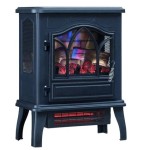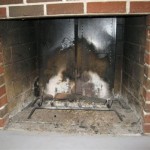Here's an article about plasma TVs above gas fireplaces, structured according to your specifications:
Plasma TV Above Gas Fireplace: Considerations and Best Practices
Mounting a plasma television above a gas fireplace is a popular design choice that can create a visually appealing focal point in a living space. However, this configuration presents several potential challenges related to heat exposure, structural integrity, and viewing angles. Careful planning, proper installation techniques, and an understanding of the relevant risks are essential to ensure the longevity of the television and the safety of the occupants. This article provides a comprehensive overview of the key considerations involved in placing a plasma TV above a gas fireplace.
Understanding the Heat Factor
The primary concern when installing a television above a gas fireplace is the potential for heat damage. Plasma televisions, like other electronic devices, are sensitive to excessive heat. Prolonged exposure to high temperatures can significantly shorten the lifespan of the television, leading to picture degradation, component failure, and even permanent damage. The heat generated by a gas fireplace rises, directly exposing the area above the fireplace mantel to elevated temperatures. This makes it crucial to assess the heat output of the fireplace and implement strategies to mitigate its impact on the television.
The actual temperature above the fireplace mantel is influenced by several factors, including the size and BTU (British Thermal Units) rating of the fireplace, the height of the mantel, and the presence of any heat shielding mechanisms. A larger fireplace with a higher BTU rating will generate more heat, increasing the risk to the television. A taller mantel will provide more distance between the fireplace and the television, reducing the heat exposure. Some fireplaces are designed with built-in heat deflectors or can be retrofitted with aftermarket shields to redirect heat away from the area above the mantel. Accurate measurement of the temperature above the mantel during fireplace operation is crucial. This can be done using a thermometer placed in the intended location of the television. Temperatures exceeding 90 degrees Fahrenheit for extended periods should be considered a warning sign, indicating the need for further heat mitigation measures.
Adequate ventilation is another critical factor in managing heat. Enclosing the television in a tightly sealed cabinet or recess can trap heat and exacerbate the problem. Providing ample airflow around the television allows heat to dissipate more effectively. This can be achieved by leaving open space around the television or by installing ventilation fans to actively circulate air. For installations where heat levels are a significant concern, consider using a temperature sensor that automatically shuts off the fireplace if the temperature above the mantel exceeds a pre-set threshold. This provides an added layer of protection against overheating the television.
While plasma televisions are particularly susceptible to heat damage, all types of televisions, including LED and OLED models, can be adversely affected by excessive heat. Therefore, the principles of heat mitigation discussed above apply to any television installed above a gas fireplace, regardless of the display technology.
Structural Considerations and Mounting Procedures
Beyond the heat factor, the structural integrity of the wall and the mounting hardware used are of paramount importance. Plasma televisions, especially older models, can be quite heavy. The wall must be capable of supporting the weight of the television and the mounting bracket without risk of collapse or damage. Before proceeding with the installation, it is essential to determine the type of wall construction (e.g., drywall, plaster, brick, concrete) and to locate the wall studs. Wall studs are vertical framing members that provide structural support and are necessary for securely attaching the mounting bracket.
If the wall is constructed of drywall, it is crucial to mount the television bracket directly to the wall studs. Using drywall anchors alone is generally insufficient to support the weight of a plasma television, and can lead to the television falling off the wall. A stud finder can be used to locate the wall studs. Once the studs are located, mark their positions and use a level to ensure that the mounting bracket is installed straight. Use lag bolts or screws that are long enough to penetrate deeply into the studs. The specific type and size of fasteners will depend on the weight of the television and the material of the wall studs. Consult the mounting bracket manufacturer's instructions for specific recommendations.
For brick or concrete walls, specialized anchors designed for these materials are required. These anchors are typically installed by drilling holes into the brick or concrete and then inserting the anchors. The mounting bracket is then attached to the anchors using bolts or screws. It is essential to choose anchors that are rated to support the weight of the television and to follow the manufacturer's instructions carefully. If you are unsure about how to install the anchors correctly, it is best to consult with a professional installer.
The mounting bracket itself should be of high quality and specifically designed for the size and weight of the television. Choose a bracket that is VESA (Video Electronics Standards Association) compliant, meaning that it adheres to a standardized mounting hole pattern. This ensures compatibility with a wide range of televisions. There are several types of mounting brackets available, including fixed mounts, tilting mounts, and full-motion mounts. Fixed mounts hold the television flush against the wall, while tilting mounts allow you to adjust the vertical viewing angle. Full-motion mounts allow you to extend the television away from the wall and swivel it left or right, providing maximum flexibility in viewing angles. The choice of mounting bracket will depend on your specific needs and preferences.
Proper cable management is another important consideration during the installation process. Run cables through the wall to conceal them from view and create a cleaner, more aesthetically pleasing appearance. Use cable ties or straps to bundle the cables together and prevent them from dangling behind the television. Be sure to leave enough slack in the cables to allow for easy access to the television's input/output ports. Consider using a cable management system that includes a wall plate with openings for cables to pass through. This will help to protect the cables from damage and make it easier to connect and disconnect devices.
Optimizing Viewing Angles and Ergonomics
The height at which the television is mounted can significantly impact the viewing experience. Mounting the television too high above the fireplace can result in neck strain and discomfort, especially during prolonged viewing sessions. The ideal viewing height is typically considered to be eye level when seated. However, when mounting a television above a fireplace, it is often necessary to compromise on this ideal height due to the placement of the fireplace and mantel. As a general rule, aim to mount the television as low as possible while still maintaining a safe distance from the fireplace and ensuring that the bottom of the television is at least a few inches above the mantel.
Tilting mounts can help to improve the viewing angle when the television is mounted higher than eye level. By tilting the television downwards, you can compensate for the elevated position and reduce neck strain. Some full-motion mounts also allow you to adjust the vertical viewing angle, providing even greater flexibility. Experiment with different tilting angles to find the optimal viewing position. Consider the typical seating arrangement in the room when determining the viewing angle. If you frequently watch television from a reclined position, you may need to tilt the television downwards more than if you typically watch television from an upright position.
The distance between the seating area and the television is another important factor to consider. A larger viewing distance requires a larger screen size to maintain a comfortable viewing experience. The recommended viewing distance for a plasma television is typically between 8 and 12 feet, depending on the screen size. If the seating area is too far away from the television, the picture may appear small and difficult to see. If the seating area is too close to the television, the picture may appear blurry or distorted. Adjust the seating arrangement or choose a larger or smaller television to optimize the viewing distance.
Ambient lighting can also affect the viewing experience. Glare from windows or overhead lights can make it difficult to see the picture clearly. Minimize glare by using window coverings such as blinds or curtains, and by dimming or turning off overhead lights. Consider using an anti-glare screen protector to further reduce glare. Ensure that the ambient lighting is balanced and does not create excessive contrast with the television screen. A dim, evenly lit room is generally ideal for watching television.
Finally, consider the overall aesthetics of the installation. The television should be properly centered above the fireplace and should be aligned with the mantel. The mounting bracket and cables should be concealed as much as possible. Choose a mounting bracket and cable management system that complements the decor of the room. The goal is to create a clean, cohesive, and visually appealing installation that enhances the overall look and feel of the space.

Can I Mount My Tv Above The Fireplace

Can I Mount My Tv Above The Fireplace

Can I Mount A Tv Over My Fireplace Warming Trends

Can You Put A Tv Over Fireplace Direct Fireplaces

ᑕ❶ᑐ What To Consider Before Mounting A Tv Above Fireplace

Matching Your Tv Size To Fireplace

Is It Safe To Mount Your Tv Above The Fireplace Chimney And Wildlife

Can I Put A Tv Above Fireplace The Ultimate Guide Bonfire

ᑕ❶ᑐ What To Consider Before Mounting A Tv Above Fireplace

Can You Put A Tv Over Fireplace Direct Fireplaces
Related Posts








